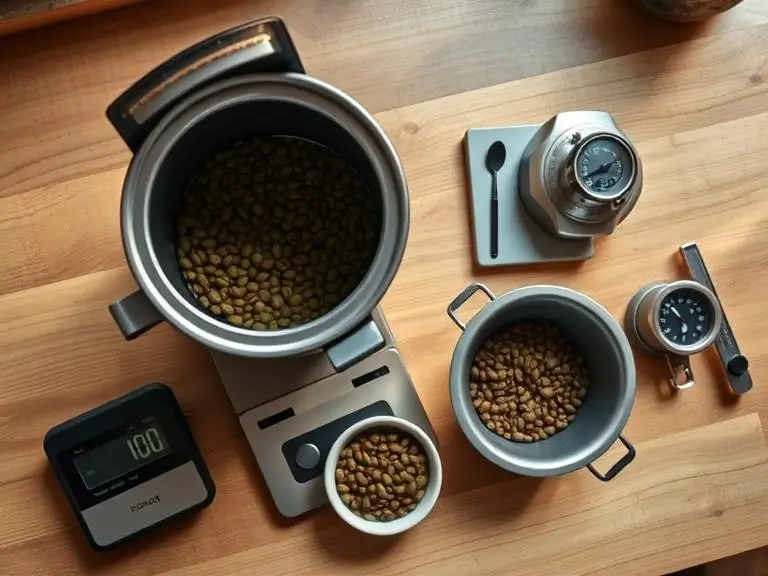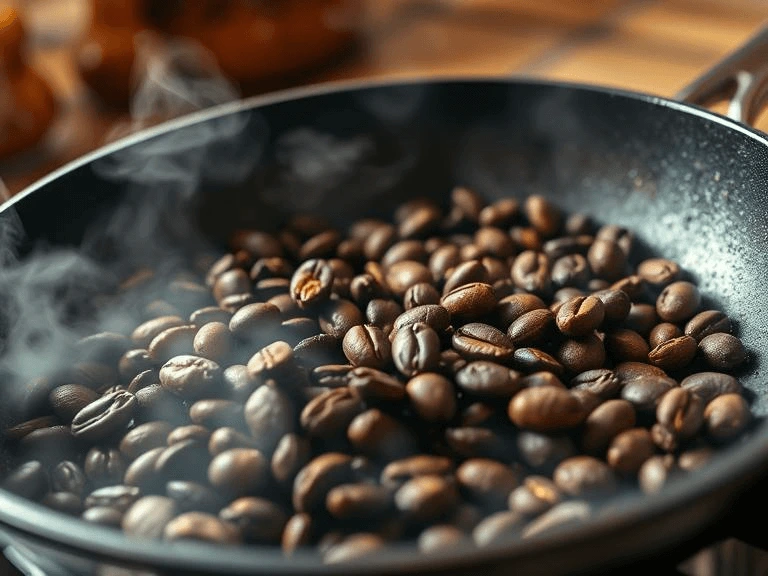Roast Coffee at Home: How to Get That Perfect Brew
Table of Contents
Roasting coffee at home can transform your morning ritual into a sensory adventure. If you’ve ever wondered how to roast coffee beans at home, you’re not alone. Home roasting lets you roast your own coffee beans to tailor the flavor profile you crave.
Mastering the steps and understanding the variables in roasting coffee at home can feel daunting at first. Questions like how do I roast coffee beans at home and which equipment to choose often pop up. But with the right guidance, you’ll learn to control heat, timing, and bean selection.
By committing a little time and patience, you’ll soon roast your own coffee beans like a pro. This guide will walk you through equipment, techniques, and troubleshooting, ensuring every batch shines. Whether you’re a curious beginner or an espresso enthusiast, you’ll discover how to get the perfect brew when you roast coffee at home.
Tools to Roast Coffee at Home
Before you begin to roast coffee at home, gather the right tools to prepare your perfect batch. Having the proper setup makes all the difference when you roast your own coffee beans.
- Green Coffee Beans—Choose high-quality, single-origin beans for predictable flavors.
- Roasting Equipment
- Air Popper Roaster—Affordable, easy for beginners.
- Stovetop Drum Roaster—More control over roast profile.
- Dedicated Home Coffee Roaster—Best consistency and temperature control.
- Digital Scale—Measure beans to ±1 g for repeatable results.
- Thermometer or Probe—Track internal bean temperature (°F or °C).
- Timer—Keep precise track of each roast phase.
- Cooling Tray or Colander—Rapidly cool beans to stop roasting.
- Airtight Storage Container—Store degassed beans to preserve freshness.

Step-by-Step Guide: How to Roast Coffee Beans at Home
Learning how to roast coffee beans at home is easier when broken into clear steps. Follow this process for a balanced, flavorful roast.
Select High-Quality Green Beans
- Source Specialty Beans—Look for fresh harvests with roast-date stamps.
- Check Moisture Content—Ideal range is 10–12%; extremes lead to uneven roast.
Real-Life Example:
“I ordered Ethiopian Yirgacheffe green beans online and weighed 100 g for my first batch. The flavor clarity was incredible!” — Alex, home roaster
Prepare Your Workspace
- Clear a flat, heat-resistant surface.
- Arrange all tools to prepare the roast within arm’s reach.
- Ensure good ventilation to manage smoke and chaff.
Perform the Roast
A typical home roast follows five stages. Use your timer and thermometer for precision.
| Stage | Temp Range | Description |
|---|---|---|
| Drying | 212–320 °F | Dark roast: oils migrate to the surface. |
| Yellowing | 320–350 °F | Sweet, grassy aromas emerge. |
| First Crack | 385–395 °F | Audible “crack” as beans expand; marks light roast. |
| Development | 395–430 °F | Flavor compounds deepen; roast to desired level. |
| Second Crack (opt) | 435–445 °F | Dark roast; oils migrate to the surface. |
Numbered Steps:
- Preheat the roaster to ~350°F.
- Add 100–150 g of green beans once stable heat is reached.
- Stir or agitate constantly for drum and pan roasters.
- Watch for the first crack (≈5–7 minutes in).
- Time your development phase (1–2 minutes for medium roast).
- Remove and cool immediately to halt the roast.
Cool and Degas
- Spread beans on a metal colander and shake to release heat.
- Let beans rest in an airtight container for 12–24 hours to degas CO₂.
Common Mistakes When You Roast Your Own Coffee Beans
Avoid these pitfalls as you roast coffee beans at home:
- Too High Heat—Leads to uneven roast and burnt flavors.
- Ignoring Bean Movement—Stagnant beans scorch; agitation is key.
- Skipping degassing results in flat, CO₂-heavy brews.
- Overdevelopment—Dark roasts can taste ashy or bitter.
- Inconsistent Batch Sizes—Weight variation throws off timing.
Expert Tips for Perfecting Your Roast Coffee at Home
To elevate your home-roasted coffee, incorporate these tried-and-true strategies:
- Build a Roast Log
- Record bean origin, batch size, roast times, and flavor notes.
- Use a Roast Profile Curve
- Map temperature vs. time to reproduce your best roasts.
- Experiment with Airflow
- Increasing airflow can sharpen acidity; reduce for fuller body.
- Freshness Check
- Roast in small batches (100–200 g) to ensure peak flavor within a week.
Expert Opinion:
“Consistent agitation and real-time temperature tracking separate hobbyists from pros,” says Maria López, SCA-certified roaster.
You’ll Love These Too:
- Caramel Iced Coffee Recipe (5-Minute Easy Guide!)
- Mocha Iced Coffee Recipe: 2 Easy Steps to Perfection
- Coffee Creamer Without Condensed Milk: Best 5-Minute Fix
Conclusion
Roasting coffee at home isn’t just a hobby—it’s a journey to unmatched freshness and flavor control. You’ve learned how to:
- Select quality green beans for consistent results.
- Use the right tools to prepare and monitor your roast.
- Master each roast stage, from drying to development.
- Avoid common mistakes like overheating or skipping degassing.
- Keep a roast log and experiment with airflow and profiles.
As you roast your own coffee beans, remember that practice and patience are your best allies. Track your batches, tweak one variable at a time, and taste the difference. Soon, you’ll confidently answer, “How do I roast coffee beans at home?” and consistently roast coffee beans at home that rival your favorite café.
Ready to elevate your morning cup? Grab some green beans, set up your roaster, and start your first batch today. Share your results, questions, or favorite profiles below—let’s build the ultimate home-roasting community!
FAQ
Q: What equipment do I need to roast coffee at home?
A: At minimum, you need quality green beans, a heat source (air popper, drum roaster, or dedicated machine), a digital scale, and something to cool beans (colander or tray).
Q: How long does it take to roast coffee beans at home?
A: Most home roasts take 8–12 minutes total—from drying through first crack to development—depending on your equipment and roast level.
Q: Can I roast my own coffee beans without special equipment?
A: Yes, you can use a stovetop pan or air popcorn popper, though dedicated roasters offer more control and consistency.
Q: When should I brew after I roast coffee at home?
A: Allow your beans to rest and degas for 12–24 hours; this period unlocks peak flavors and prevents CO₂ from interfering with extraction.
Q: How much coffee should I roast per batch?
A: Small batches of 100–200 g ensure freshness and allow you to dial in roast profiles more easily.
Did this method work for you? Tell us your results!?
There are no reviews yet. Be the first one to write one.







